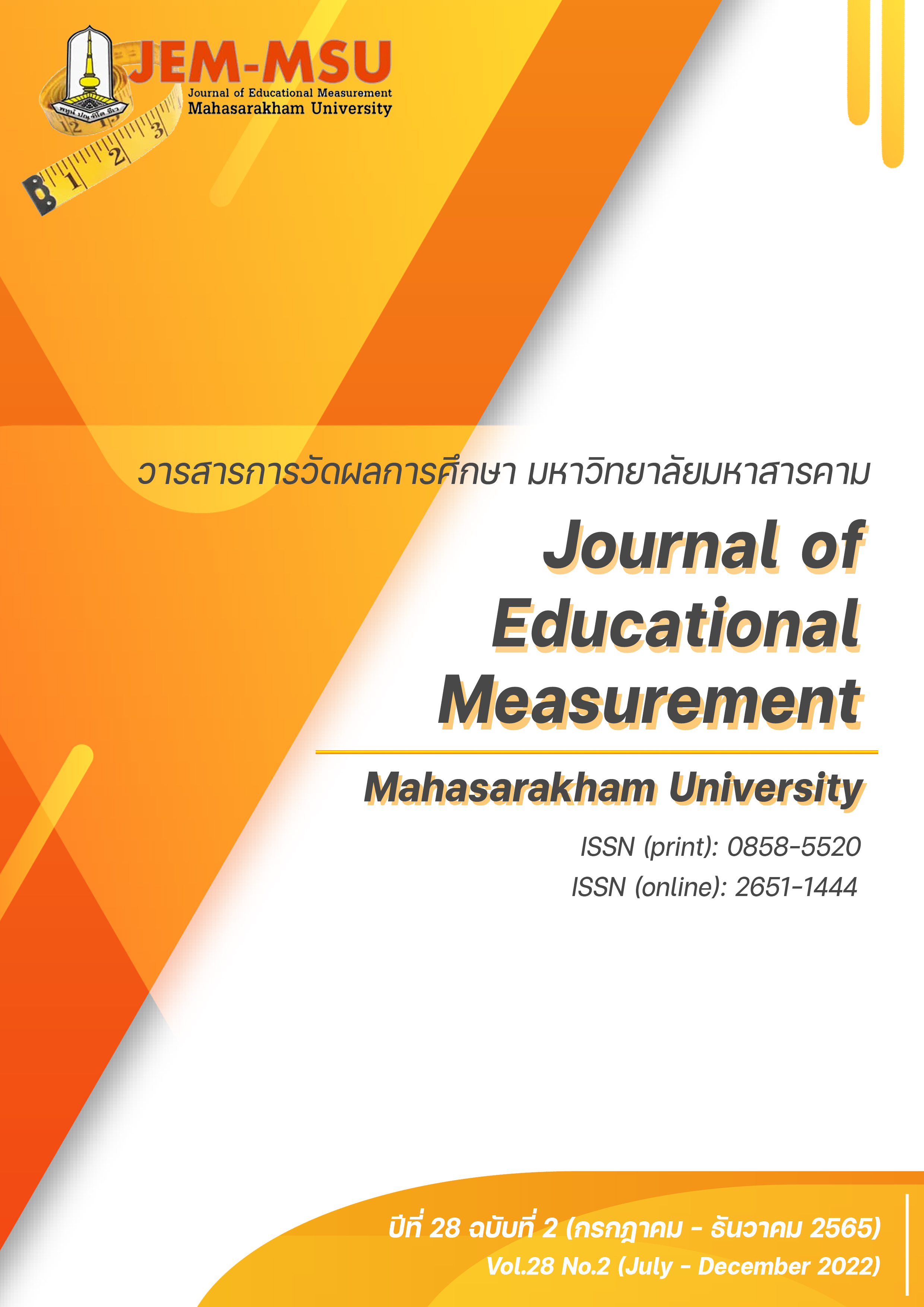Sample Size Determination Techniques for Structural Equation Modeling: SEM
Main Article Content
Abstract
The main objectives of this article are: (1) for readers to know and gain better understanding about the sample size determination techniques for Structural Equation Modeling (SEM) analysis; (2) for readers to see guidelines on how to determine the sample size for the classic Structural Equation Modeling analysis; and 3) for readers to see guidelines on sample size determination for the Structural Equation Modeling using an online program and the synthesized sample size table. In this article, the author employed synthesis of academic documents, books, textbooks and articles on sample size determination for Structural Equation Modeling analysis. At the beginning, this article provides concepts on approaches to Structural Equation Modeling analysis. In the middle portion of the article, it presents the Structural Equation Modeling sample size determination using traditional principles, an online program and the synthesized sample size table. The last part of the article deals with the summary for readers to consider and make their own choice in implementation of the sample size determination for Structural Equation Model analysis to obtain better research quality and reliability as well as to develop more body of knowledge in research.
Article Details

This work is licensed under a Creative Commons Attribution-NonCommercial-NoDerivatives 4.0 International License.
The content and information contained in the published article in the Journal of Educational Measurement Mahasarakham University represent the opinions and responsibilities of the authors directly. The editorial board of the journal is not necessarily in agreement with or responsible for any of the content.
The articles, data, content, images, etc. that have been published in the Journal of Educational Measurement Mahasarakham University are copyrighted by the journal. If any individual or organization wishes to reproduce or perform any actions involving the entirety or any part of the content, they must obtain written permission from the Journal of Educational Measurement Mahasarakham University.
References
Barbu, A., & Zhu, S-C. (2020). Monte Carlo Methods. Springer Nature Singapore Pte Ltd.
Bentler, P. M., & Chou, C. P. (1987). Practical issues in structural modeling. Sociological Methods & Research, 16(1), 78-117.
Bentler, P.M., & Yuan, K.-H. (1999). Structural equation modeling with small samples: Test statistics. Multivariate Behavioral Research, 34(2), 181- 197.
Boomsma, A. (1985). Nonconvergence, improper solutions, and starting values in LISREL maximum likelihood estimation. Psychometrika, 52, 345–370.
Christensen, L. B., Johnson, R. B., & Turner, L. A. (2014). Research Methods, Design, and Analysis. Pearson International Publishing.
Creative Research Systems. (2022). Sample Size Calculator. Creative Research Systems. https://www.surveysystem.com/sscalc.htm
Denis, D. J. (2021). Applied Univariate, Bivariate, and Multivariate Statistics Understanding Statistics for Social and Natural Scientists, With Applications in SPSS and R. John Wiley & Sons.
Gravetter, F. J. (2018). Research Methods for the Behavioral Sciences. Cengage Learning.
Kline, R. B. (2015). Principles and Practice of Structural Equation Modeling (4th ed.). The Guilford Press.
Hair, J. F., Black, W. C., Babin, B. J., & Anderson, R. E. (2019). Multivariate Data Analysis. Hampshire, Cengage Learning EMEA.
Hair, J. F., Black, W. C., Babin, B. J., Anderson, R. E., & Tatham, R. L. (2012). Multivariate data analysis (6th ed.). Pearson.
Marsh, H.W. and Hau, K.T. (1999). Confirmatory factor analysis: strategies for small sample sizes. In: Statistical Strategies for Small Sample Size. Sage Publications.
Marsh, H.W., Hau, K.-T., Balla, J.R., and Grayson, D. (1998). Is more ever too much? The number of indicators per factor in confirmatory factor analysis. Multivariate Behavioral Research, 33, 181–220.
Mitchell, F. J. (2017). Monte Carlo Simulation Methods, Assessment and Applications. Nova Science Publishers, Inc.
Muthén, L.K. and Muthén, B. (2002). How to use a Monte Carlo study to decide on sample size and determine power. Structural Equation Modeling: A Multidisciplinary Journal, 4, 599–620.
Patten, M. L, & Newhart, M. (2018). Understanding Research Methods. Taylor and Francis.
Rubinstein, R. Y., & Kroese, D. P. (2016). Simulation and the Monte Carlo Method, Third Edition. John Wiley & Sons, Inc.
Schreiber, J. B., Nora, A., Stage, F. K., Barlow, E. A., & King, J. (2006). Reporting structural equation modeling and confirmatory factor analysis results: A review. The Journal of Educational Research, 99(6), 323-338.
Soper, D. S. (2022). Structural Equation Model Sample Size Calculator. https://www.analyticscalculators.com/calculator.aspx?id=89.
Soper, D. S. (2022b). A-priori Sample Size Calculator for Structural Equation Models. http://www.danielsoper.com/statcalc
Tabachnick, B. G. and Fidell, L. S. (2007). Using Multivariate Statistics (5th ed.). Pearson International Publishing.
Tabachnick, B. G. and Fidell, L. S. (2012). Using Multivariate Statistics (6th ed.). Pearson International Publishing.
Tabachnick, B. G. and Fidell, L. S. (2014). Using Multivariate Statistics Pearson New International Edition. Pearson International Publishing.
Tabachnick, B. G., Fidell, L. S., & Ullman, J. B. (2018). Using Multivariate Statistics (7th ed.). Pearson International Publishing.
Thakkar, J. J. (2020). Structural Equation Modelling Application for Research and Practice (With Amos and R). Springer Nature.
Wang, J., & Wang, X. (2020). Structural equation modeling applications using Mplus. Wiley, John Wiley & Sons Ltd.
Wolf, E. J., Harrington, K. M., Clark, S. L., & Miller, M. W. (2013). Sample size requirements for structural equation models: An evaluation of power, bias, and solution propriety. Educational and Psychological Measurement, 73(6), 913-934.


